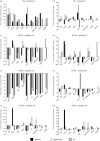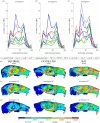Evolutionary biomechanics: hard tissues and soft evidence?
- PMID: 33593183
- PMCID: PMC7935025
- DOI: 10.1098/rspb.2020.2809
Evolutionary biomechanics: hard tissues and soft evidence?
Erratum in
-
Correction to: 'Evolutionary biomechanics: hard tissues and soft evidence?'.Proc Biol Sci. 2021 May 12;288(1950):20210831. doi: 10.1098/rspb.2021.0831. Epub 2021 May 5. Proc Biol Sci. 2021. PMID: 33947242 Free PMC article. No abstract available.
Abstract
Biomechanical modelling is a powerful tool for quantifying the evolution of functional performance in extinct animals to understand key anatomical innovations and selective pressures driving major evolutionary radiations. However, the fossil record is composed predominantly of hard parts, forcing palaeontologists to reconstruct soft tissue properties in such models. Rarely are these reconstruction approaches validated on extant animals, despite soft tissue properties being highly determinant of functional performance. The extent to which soft tissue reconstructions and biomechanical models accurately predict quantitative or even qualitative patterns in macroevolutionary studies is therefore unknown. Here, we modelled the masticatory system in extant rodents to objectively test the ability of current muscle reconstruction methods to correctly identify quantitative and qualitative differences between macroevolutionary morphotypes. Baseline models generated using measured soft tissue properties yielded differences in muscle proportions, bite force, and bone stress expected between extant sciuromorph, myomorph, and hystricomorph rodents. However, predictions from models generated using reconstruction methods typically used in fossil studies varied widely from high levels of quantitative accuracy to a failure to correctly capture even relative differences between macroevolutionary morphotypes. Our novel experiment emphasizes that correctly reconstructing even qualitative differences between taxa in a macroevolutionary radiation is challenging using current methods. Future studies of fossil taxa should incorporate systematic assessments of reconstruction error into their hypothesis testing and, moreover, seek to expand primary datasets on muscle properties in extant taxa to better inform soft tissue reconstructions in macroevolutionary studies.
Keywords: biomechanics; finite element analysis; macroevolution; multi-body dynamics; rodent mastication.
Figures





References
Publication types
MeSH terms
Associated data
Grants and funding
LinkOut - more resources
Full Text Sources
Other Literature Sources

